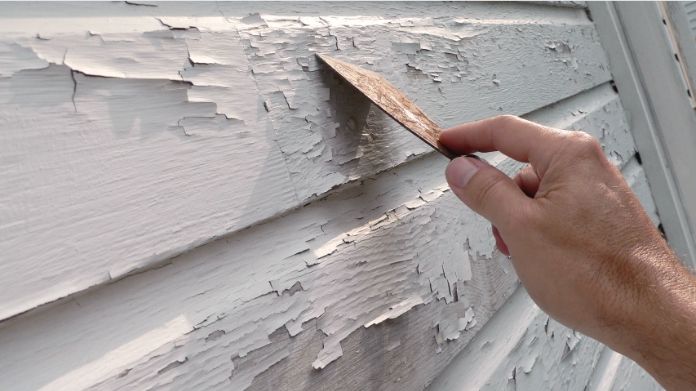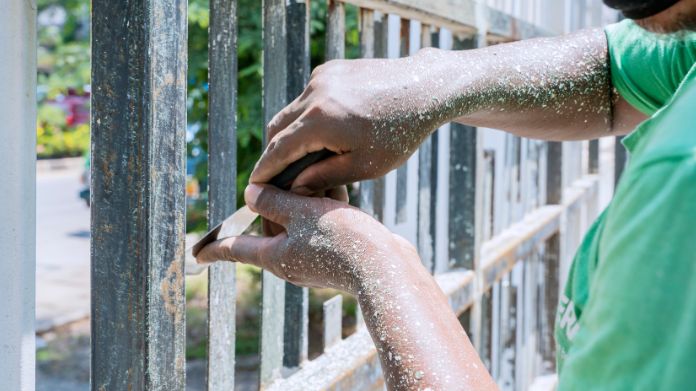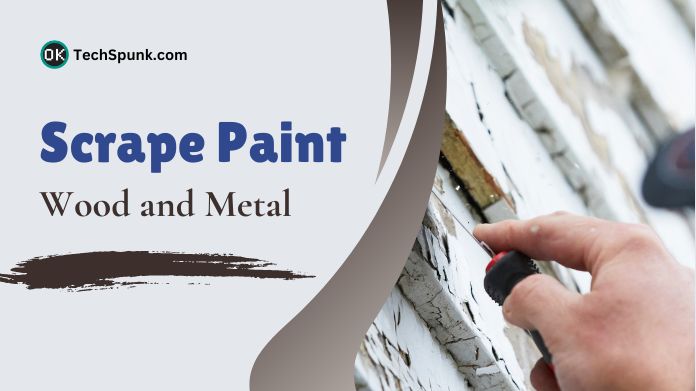Paint scraping is a necessary skill for any DIY enthusiast or homeowner trying to freshen up their living environment.
Whether you’re restoring an antique piece of furniture or renovating the outside of your home, removing old paint is an important first step. However, it might be intimidating owing to the painstaking attention and labour necessary.
In this article , Okayreview will walk you through the best procedures to scrape paint properly, ensuring that your next painting project begins on the right foot.
Table of Contents
Tools and Materials Needed to Scrape Paint Effectively
Before you begin, assembling the right tools and materials is crucial. You will need:
- Scrapers: A good quality scraper is indispensable. Options range from simple putty knives to more specialized paint scrapers designed to remove multiple layers at once.
- Sandpaper: Various grits will help smooth out the surfaces after scraping.
- Heat guns: These can soften old paint, making it easier to remove in larger strips.
- Chemical paint removers: These are useful for stubborn paints or intricate areas where physical scraping is challenging.
- Safety gear: Always wear gloves, goggles, and masks to protect yourself from dust and chemical fumes.
Choosing the right tools will depend on the scale of your project and your budget, but investing in quality materials will make the job easier and safer.
Preparing to Scrape Paint
An effective paint-scraping process requires careful preparation of the workstation. First, thoroughly clean the surface to eliminate any dirt or grime.
This step may appear insignificant, but it is critical for ensuring that your tools slide easily and without further obstacles.
Next, repair any surface damage. This isn’t just about aesthetics; it’s about making sure your efforts last.
Set up your space with safety in mind: lay down drop cloths to catch those pesky paint chips and open a window or two if you’re using chemical strippers.
Best Way to Scrape Paint Off Wood
 Scraping paint off wood might feel like a careful balance between keeping the lovely grain beneath and removing every last flake of old paint.
Scraping paint off wood might feel like a careful balance between keeping the lovely grain beneath and removing every last flake of old paint.
Here are some strategies that I’ve found successful throughout the years of doing various DIY projects:
- Start with the Right Tool: A good-quality scraper makes a big difference. Choose one that fits comfortably in your hand because you’ll be using it a lot.
- Gentle Pressure: Use light, steady pressure with your scraper to lift the paint without gouging the wood. It’s a bit like peeling an apple; you want to get just the peel, not the fruit beneath!
- Heat It Up: A heat gun may work wonders on those difficult places where paint clings like it’s stuck to a cliff edge. Just be careful not to burn the wood. I learnt this the hard way on an antique dresser, and let’s just say it gave the item some ‘character’.
- Chemical Assistance: Sometimes you just need a little more help. Chemical paint removers soften the paint, making it simpler to scrape away. Make sure to use them in a well-ventilated environment and with gloves—I can’t emphasize this enough after a memorable event with a resistant cabinet and a messy cleanup.
- Finish with Sanding: Once the majority of the paint is off, switch to sandpaper. I start with a rougher grit and work my way down to a fine one for a silky, smooth finish.
How to Scrape Paint Off Metal Surfaces?
Removing paint off metal surfaces needs more effort, but paying close attention to detail will help you avoid harm to your belongings.
 Here’s how we approach this work based on my personal expertise in refurbishing metal fixtures and furniture:
Here’s how we approach this work based on my personal expertise in refurbishing metal fixtures and furniture:
- Choose the Right Tools: For most metal surfaces, a robust scraper or wire brush will suffice. When working with softer metals, I’ve discovered that these tools remove layers without piercing the metal behind them.
- Apply Heat When Needed: A heat gun may be quite useful for removing thick, resistant layers. I recall working on an old garden gate where the paint would not budge. A little heat loosened the paint so that it pulled away like butter.
- Use Chemical Strippers for Tough Jobs: Physical tools are not always sufficient, especially when dealing with complicated metals. A chemical paint remover can help in certain situations. Make sure you utilize it in a well-ventilated room or outside. It’s dirty, but it works!
- Safety First: Metal might have sharp edges once the paint is removed; therefore, gloves are required. I learnt this the hard way on my first job, and a few bandages later, I won’t make the same mistake again.
- Clean and Prep for Repainting: Once the paint has been removed, clean the metal with a solvent or just soapy water to eliminate any residue. This step ensures that the finish or paint you apply next adheres properly and looks beautiful.
Special Considerations for Different Paint Types
Understanding the sort of paint you’re working with might make all the difference when it comes to scraping it.
Here are some important issues to consider based on my personal hands-on experience:
- Oil-Based Paints:
- Tougher to Remove: From redoing my grandfather’s old garage doors, I’ve learned that oil-based paints are stubborn. They typically need a more aggressive approach.
- Solvents Might Be Needed: I found that using a chemical solvent helps break down the paint more easily, so don’t shy away from them if you’re dealing with an oil-based type.
- Latex Paints:
- Easier to Lift: Latex paints are usually simpler to scrape paint off. During my previous project, repainting kitchen chairs, I was able to remove the majority of the paint with just a scraper and minimum effort.
- Less Chemical Intervention: Water-based strippers are usually sufficient for latex paints, making this a less fume-filled experience.
- Acrylic Paints:
- Quick-Drying: Acrylics dry rapidly, as I discovered when I unintentionally painted over an old tabletop. They might be difficult to remove once completely set.
- Flexible Removal Options: You can often get away with a combination of heating and gentle scraping. This approach helped preserve the fine wood grain of my table.
Each type of paint demands a somewhat different approach. Paying attention to these intricacies will not only make the task easier but will also protect your surfaces from harm.
Closure
Scraping paint is an important step in any painting endeavour that demands time and attention to detail. By following these rules, you may guarantee that your surface is ready for a new coat of paint.
Remember, safety comes first, and sometimes consulting a professional is the best option, especially for large or complex jobs.
So prepare, take your time, and approach your paint-scraping endeavour with confidence, knowing you’re well-equipped to do the task at hand.
With these insights, you’ll be able to complete your paint scraping jobs more easily and obtain better outcomes in your remodelling projects.


Great article! Your step-by-step guide on how to scrape paint is super clear and easy to follow. I especially appreciate the tips on choosing the right tools and staying safe during the process. This is such a handy resource for anyone tackling a painting project. Thanks for sharing these insights!
Great guide! Your step-by-step approach to scraping paint is really helpful, especially for DIY enthusiasts. I appreciate the tips on tools, safety precautions, and making the process more efficient.